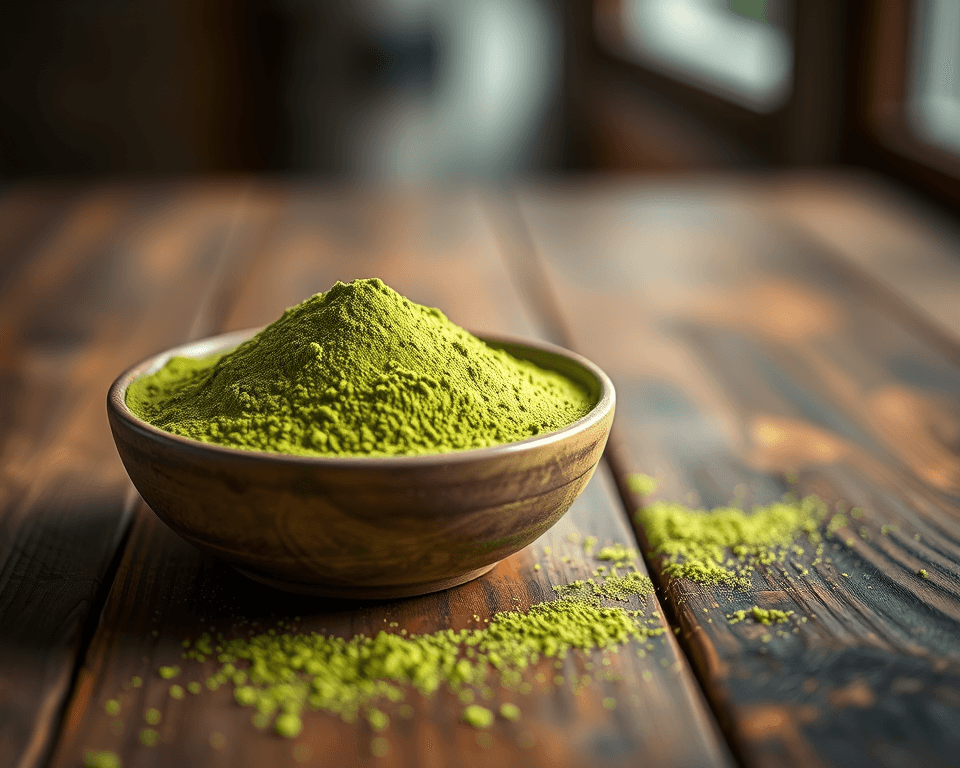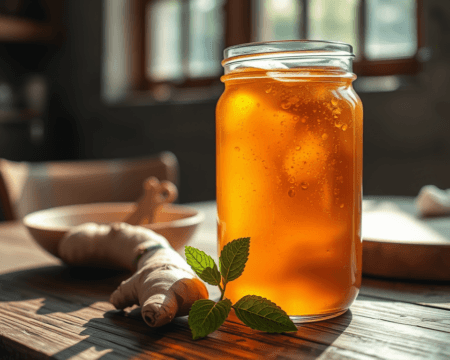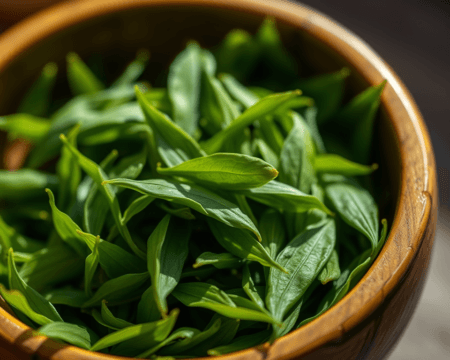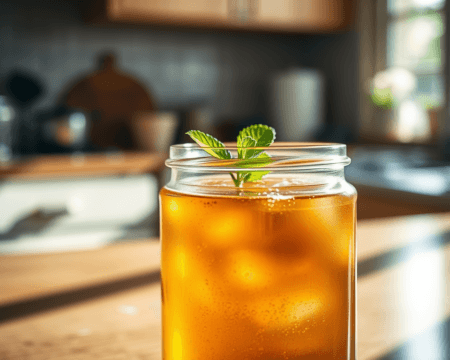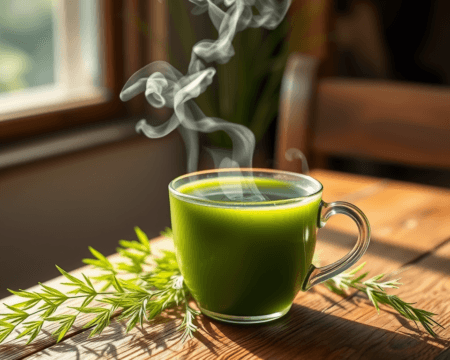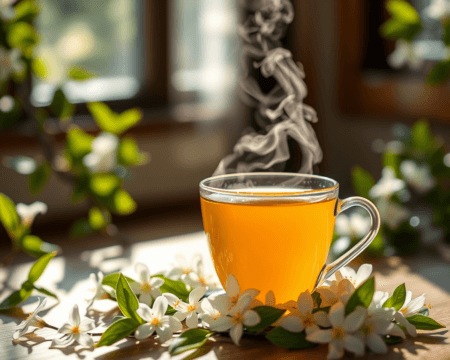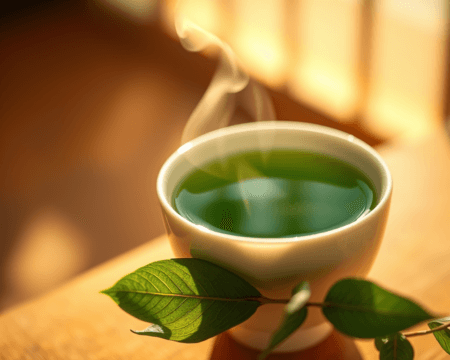There’s something about matcha that just speaks to the soul. Its vibrant green hue and the rich, umami flavor have captivated tea lovers and health enthusiasts alike. But if you think matcha is just any old green tea, you’re in for a surprise. This powdered gem has a rich history, a unique cultivation process, and regions that passionately produce it. Buckle up, because we’re going on a journey that unpacks everything about matcha and its origins.
Key Takeaways
- Matcha is more than just a trendy drink; it’s a powerhouse packed with antioxidants and cultural significance.
- The best matcha comes from specific regions in Japan, each with unique growing techniques and flavors.
- Shading techniques during cultivation crucially impact matcha’s flavor profile and quality.
- Understanding the economics of matcha farming reveals its growing global market and its benefits to local communities.
Understanding Matcha Tea Cultivation
What is Matcha Tea?
So, what exactly is matcha? At its core, matcha is powdered green tea, but don’t let that simple definition fool you. Matcha is decidedly more complex. Harvested from shade-grown tea leaves, matcha is highly sought after for its vibrant color and rich taste. When you consume matcha, you’re not just sipping on a beverage; you’re absorbing a concentrated source of nutrients and antioxidants.
You might wonder about the difference between matcha and regular green tea. While both come from the Camellia sinensis plant, matcha uses the whole leaf, ground into a fine powder, whereas traditional green tea is steeped, discarding the leaves. It’s why matcha is often touted for its health benefits—think supercharged green tea with added antioxidants.
Historical Significance of Matcha Cultivation
Matcha’s roots run deep in Japanese culture, particularly intertwined with Zen Buddhism and the traditional tea ceremony. This ceremonial practice isn’t just about tea; it’s a meditative experience shaping Japan’s cultural heritage. Historically, matcha was brought from China during the Tang dynasty and found its sweet spot in Japan, where it evolved into the vibrant tea culture we see today.
As a casual observer, you might find yourself intrigued by matcha’s journey through history, influencing not just the drink itself, but the culinary arts and even the arts of mindfulness and relaxation that are so central to Japanese philosophy.
Geographic Origins of Matcha Tea
Key Matcha-Growing Regions in Japan
When you think of matcha, think Japan—particularly regions like Uji, Nishio, Shizuoka, and Kagoshima. Each area boasts distinct soil and climate conditions, crafting its unique flavor profile and quality of matcha.
Uji: Known as the holy grail of matcha production, Uji in Kyoto has been cultivating tea since the 12th century. Uji matcha is often characterized by its rich umami and smooth finish. If you’re looking for top-tier matcha, this is the place to go. It’s no wonder that Uji matcha is often sought-after by tea connoisseurs around the globe.
Nishio: Located in Aichi Prefecture, Nishio is another heavyweight in matcha production. Known for its robust flavors, Nishio matcha has a slightly sweet profile, making it perfect for added culinary uses, like in lattes or baking.
Shizuoka: As Japan’s leading tea-growing region, Shizuoka combines coastal conditions with mountainous terrain, producing varied flavors. It may not be as famous as Uji, but its matcha holds its own with a spicy, earthy note that’s well-loved.
Kagoshima: On the southern tip of Kyushu, Kagoshima is home to matcha that stands out due to its tropical climate. This region’s matcha tends to have a fresher and greener taste, perfect for those who like a bright kick.
Matcha Cultivation Around the World
While Japan reigns supreme in matcha, the world has caught on. China and Taiwan are producing remarkable matcha, blending traditional techniques with modern farming practices that keep flavors fresh and vibrant. South Korea, too, is making strides in matcha cultivation with a more robust focus on organic farming.
In the USA, there’s been a notable rise in matcha popularity, leading to the emergence of local farms experimenting with cultivation techniques. This global spread doesn’t just diversify flavors; it shapes the way we think about sustainability and agriculture, as many of these farms prioritize organic and environmentally-friendly methods.
Growing Conditions Essential for Matcha Quality
Soil Types and Its Impact on Flavor
The soil plays a pivotal role in matcha’s cultivation, almost like the backstage crew in a big concert—they’re crucial, even if you don’t see them. Healthy, nutrient-rich soil drives flavor into matcha leaves. Most tea plants thrive in loamy soil, offering good drainage and adequate minerals.
When you taste a top-quality matcha, you can almost detect the terroir through each sip—the mineral content and quality of the soil impart subtle undertones in the matcha flavor profile. For instance, the clay soil found in Uji enhances the rich umami notes, making it stand out not just in Japan, but internationally.
Climate Factors Influencing Matcha Growth
Like all plants, matcha takes its cue from nature. The best matcha grows in temperate climates with ample rainfall, humidity, and the right amount of sunlight. The secret here is in shading techniques—blocking sunlight for certain periods encourages the leaves to boost chlorophyll production, yielding a greener and more flavorful final product.
Imagine strolling through a matcha farm with a light mist in the air, surrounded by lush greenery. That’s the ideal climate working its magic. Seasonal variations, like cooler temperatures in spring and summer, along with just the right amount of rainfall, contribute significantly to the unique characteristics of matcha from different regions.
Cultivation Process of Matcha Tea
The Art of Growing Matcha
Growing matcha is an art form—one that requires precision and dedication. It begins with shading the plants weeks before harvest. This process increases chlorophyll and reduces tannins, giving matcha a sweeter flavor and vibrant color. Harvesting isn’t just rolling through the fields with a tractor; it’s a meticulous hand-picking process. Only the finest leaves are selected, typically the youngest buds, which make for exceptional matcha.
From there, the leaves are steamed to prevent oxidation. This step is crucial; it helps preserve the bright green color and locks in those amazing health benefits. After steaming, the leaves are dried and then stone-ground into a fine powder. This grinding process is key—too rough, and you’ll lose that silky texture we crave in a good cup of matcha.
Economic Impact of Matcha Farming
Now, let’s talk bucks. The economic impact of matcha farming is profound, especially in Japan. Matcha’s global demand is skyrocketing, creating incredible opportunities for local farmers. Simply put, the matcha boom is benefiting farming communities by providing jobs, boosting local economies, and promoting sustainable practices.
Farms that prioritize organic farming methods have seen a significant uptick in sales. This isn’t just about cash flow; it’s about preserving the heritage and sustainability of matcha cultivation. It keeps the land healthy and the tea quality high, proving that what’s good for the Earth is also good for business.
Visual Representation of Matcha Cultivation
Maps of Matcha-Growing Regions
While words paint a picture, visuals bring it to life. Maps showing market distribution and matcha-growing regions clarify where to find the best matcha. A well-designed infographic on matcha cultivation can highlight key areas, like Uji and Nishio, allowing you to understand their geographical significance. Charting this information visually enhances comprehension—giving you, the reader, insight into the areas where matcha thrives best.
The geographical contours and climate conditions served up in visual formats allow anyone to explore and appreciate the intricacies of matcha origins, much like having a travel guide in your hands!
Visual Comparison of Matcha Production
When it comes to matcha production, seeing is understanding. A comparative analysis through visuals can articulate the differences between various matcha production methods across the globe. Photographic journeys showcasing everything from lush tea gardens to the intricacies of the grinding process can demystify what goes into a cup of matcha.
Imagine flipping through images of vibrant matcha landscapes, hands meticulously processing leaves, and lush green rolling hills. It’s more than captivating; it demonstrates the love and labor behind this ancient tradition. Pairing these visuals with specific details on flavor profiles leads to a richer appreciation of what makes each matcha unique.
Each cup of matcha is a story—its history, roots, and growing techniques all enrich the experience. Whether you’re a lifelong fan or just dipping your toes into the world of matcha, understanding its journey makes every sip an adventure worth taking.
Frequently Asked Questions
What are the health benefits of matcha?
Matcha is rich in antioxidants, particularly catechins, which can help reduce inflammation, support heart health, and boost metabolism. It also contains L-theanine, an amino acid that promotes relaxation and mental clarity, making it an excellent choice for enhancing focus and reducing stress.
How should I prepare matcha for the best results?
For the best matcha, sift one to two teaspoons of matcha powder into a bowl. Add hot water (not boiling) at about 175°F (80°C) and whisk vigorously with a bamboo whisk until frothy. Adjust the water amount to suit your taste preference.
Is all matcha the same, and how can I choose quality matcha?
Not all matcha is created equal. Quality varies based on factors like the region it comes from, the cultivation method, and the processing technique. Look for matcha that is bright green and labeled as ceremonial grade, as it indicates higher quality for drinking.
Can matcha be used in baking and cooking?
Yes, matcha can be used in baking and cooking. Incorporating it into recipes adds unique flavor and health benefits. Try adding it to smoothies, lattes, or baked goods like cookies and cakes to enhance taste and nutritional value.
What are the differences between ceremonial and culinary grade matcha?
Ceremonial grade matcha is higher quality, finely ground, and suitable for traditional tea preparation, offering a smoother flavor. Culinary grade matcha is more robust and can withstand heat, making it ideal for cooking and baking applications.
Is matcha caffeine-free?
No, matcha contains caffeine, though in smaller amounts compared to coffee. The caffeine content varies based on the serving size and specific type of matcha. However, its impact is often softened by the presence of L-theanine, promoting a calm energy without jitters.
How does matcha contribute to sustainability?
Matcha farming can support sustainability by promoting organic practices and preserving traditional cultivation techniques. Many small-scale farmers use eco-friendly methods, which can enhance biodiversity and support local economies in Japan.
Can I drink matcha every day?
Yes, drinking matcha daily can be beneficial due to its high antioxidant content. However, moderation is key; consider limiting your intake to 1-2 cups per day to avoid excessive caffeine consumption and potential side effects.
What should I store matcha in to maintain its freshness?
To keep matcha fresh, store it in an airtight container away from light, heat, and moisture. A cool place, like a refrigerator, is ideal. Always reseal tightly after use to prevent oxidation and preserve flavor and color.




